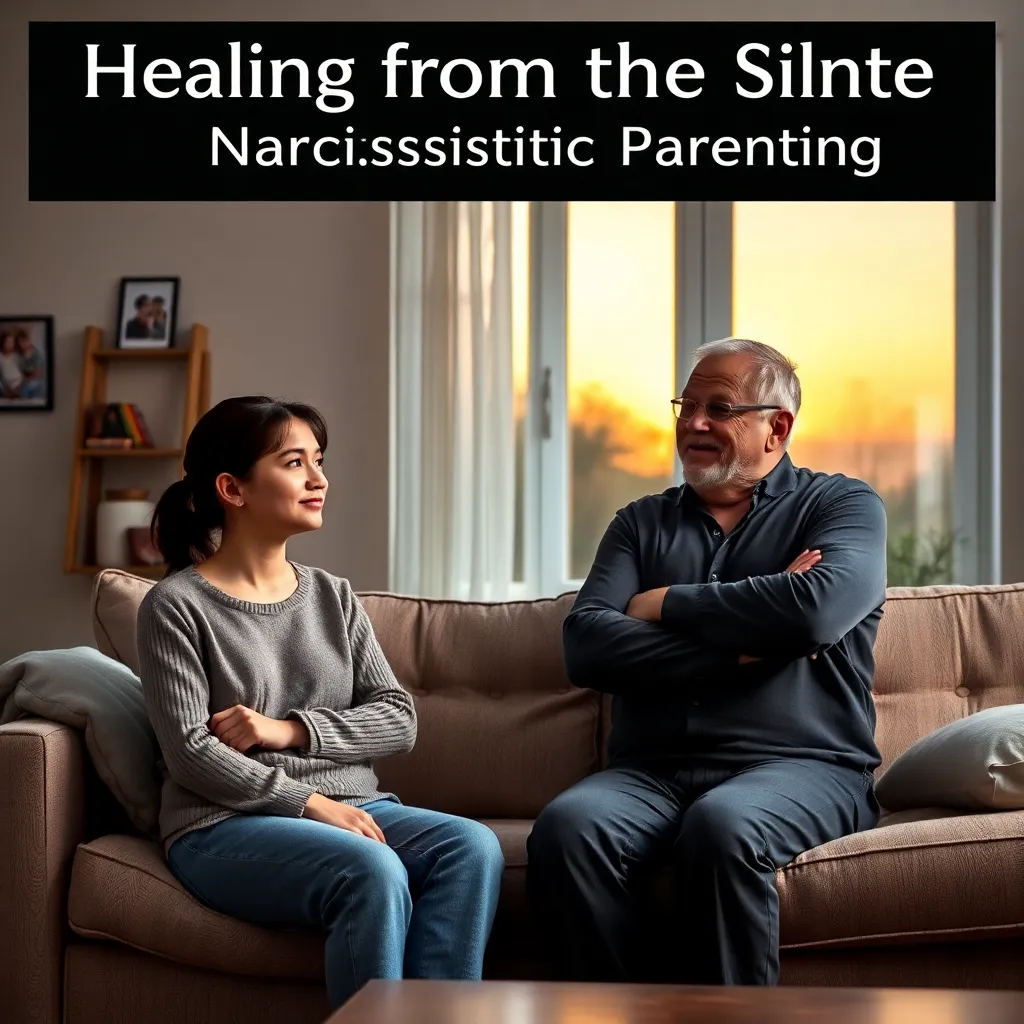Growing up with a narcissistic parent can feel like navigating an emotional labyrinth, where silence can often be more deafening than words. If you’re familiar with the cold void of narcissistic silence, you know how isolating and confusing it can be, leaving you to question your own worth and reality. Understanding this dynamic is crucial because it shapes not only your self-esteem but also your future relationships. By acknowledging and addressing these patterns, you empower yourself to break free from their constraints and foster healthier connections.
In this article, we will explore the roots of narcissistic silence and its profound impact on children. You’ll gain insights into how this silent treatment is used as a tool of control and manipulation, and why it is so damaging. More importantly, we’ll provide practical strategies to help you cope and heal from this toxic parenting style. With empathy and understanding, our aim is to offer you a path towards reclaiming your voice and self-worth.
As you read on, remember that you’re not alone and that your experiences are valid. We will guide you through recognizing the signs of narcissistic behavior and offer supportive techniques to build resilience. Together, we’ll navigate the complexities of this challenging relationship dynamic, helping you to foster a more positive and nurturing environment for yourself and those around you.
1. Recognizing Narcissistic Silence Patterns

Recognizing the subtle dynamics of narcissistic silence is crucial in understanding toxic parenting. Often, this silence manifests not as a peaceful pause but as a deliberate tool used to manipulate and control.
In real-world scenarios, a child might seek comfort or validation, only to be met with an unsettling void of silence. This calculated absence of response can lead to feelings of abandonment and confusion, leaving the child questioning their worth.
Experts highlight that this silence can be more damaging than overt verbal abuse, as it leaves the victim in a state of constant anticipation. Understanding these patterns helps in recognizing when silence is a means of punishment or manipulation, rather than a simple lapse in communication.
Being aware of these patterns allows you to take proactive steps towards healing and setting boundaries. Recognizing the intent behind the silence is the first step towards reclaiming your emotional well-being.
2. Impacts of Toxic Parenting

The impacts of toxic parenting by narcissists can manifest in a child’s life in subtle yet pervasive ways. Growing up in an environment where narcissistic silence is a common tool can lead to feelings of inadequacy and self-doubt.
Imagine a child who constantly seeks approval but is met with indifference or silence. Such experiences can create a lifelong pattern of seeking validation from others, often at the expense of their own happiness.
Experts note that children of narcissistic parents often struggle with identity and self-esteem. This can lead to difficulties in forming healthy relationships, as they may not have a clear sense of their own worth or desires.
To counter these effects, it’s crucial to focus on self-compassion and building a supportive network. Connecting with others who understand your experiences can offer validation and encouragement as you work to break these patterns.
Recognizing the impact of toxic parenting is the first step toward healing. By addressing these patterns, you can begin to cultivate more satisfying and affirming relationships in your life.
3. Coping Strategies for Children

When dealing with a narcissistic parent’s silent treatment, children can feel like they are walking on eggshells. It’s crucial for them to understand that the silence is not their fault; rather, it’s a manipulation tactic used by the narcissist to maintain control.
In real-world scenarios, children might find themselves questioning their self-worth due to these toxic interactions. Building a strong support network with understanding friends, mentors, or family members can provide much-needed validation and emotional safety.
Experts suggest that children should engage in activities that promote self-expression and emotional release, such as art or journaling. These activities help them process their feelings safely and can be powerful tools for personal empowerment.
Encouraging children to set boundaries is another effective strategy. Teaching them to gently but firmly express their needs can help mitigate the emotional impact of a narcissistic parent’s behavior.
Ultimately, fostering resilience in children involves guiding them to recognize and protect their emotional well-being. By implementing these coping strategies, children can learn to navigate the complexities of a narcissistic parent’s silence with greater confidence and clarity.
4. Setting Healthy Boundaries

Setting healthy boundaries is crucial when dealing with narcissistic silence in parenting. It requires a deep understanding of your own emotional limits and the will to enforce them consistently.
Imagine a scenario where a parent uses silence as a weapon to control their child’s behavior. In such cases, it’s essential to communicate your expectations clearly and assertively, defining what behaviors are acceptable.
Drawing on expert insights, family therapist Dr. Emily Sanders suggests using “I” statements to express feelings without placing blame. For example, saying, “I feel hurt when there is no communication,” can open up a dialogue.
Another important step is to establish consequences for boundary violations. This might mean taking a step back from interactions when toxic behaviors arise, to protect your own mental health.
Ultimately, setting healthy boundaries is about creating a safe space for yourself. It empowers you to maintain a sense of control and fosters healthier interactions within the family dynamic.
5. Healing and Moving Forward

Moving forward from the impact of narcissistic silence requires a journey of healing and self-discovery. It is essential to allow yourself to acknowledge the hurt caused by toxic parenting and give yourself permission to heal at your own pace.
One practical step is to engage in supportive therapy or counseling, which can provide a safe space to process emotions. Therapists often guide individuals through recognizing patterns learned in childhood and help them develop healthier relationship dynamics.
Consider reaching out to those who understand your experience, such as support groups or communities with similar backgrounds. Sharing stories with others can offer a sense of validation and connection, reinforcing that you are not alone in your journey.
Incorporating self-care practices such as meditation or journaling can also be beneficial. These activities encourage reflection and help foster a deeper understanding of your personal needs and boundaries.
Ultimately, healing from narcissistic parenting is about reclaiming your narrative and forming meaningful, supportive relationships. As you continue to grow, remember that progress is not linear, and each step forward is a testament to your resilience and strength.
Conclusion: Creating Beautiful Outdoor Spaces
In navigating the challenging dynamics of narcissistic silence and toxic parenting, we’ve explored five key relationship concepts. First, recognizing the signs of narcissistic behavior is crucial to understanding its impact. Second, setting healthy boundaries empowers you to protect your emotional well-being. Third, practicing self-compassion allows you to heal and grow from past wounds. Fourth, building a supportive network can provide the encouragement and perspective needed to navigate these complex relationships. Lastly, seeking professional guidance can offer tailored strategies for your unique situation.
As an immediate next step, consider identifying one boundary you can establish to protect your emotional space. This small action can create a ripple effect, enhancing your overall well-being and clarity. Remember, every step towards healthier relationships is a step towards a more fulfilling life.
Bookmark this article now as a valuable resource in your journey towards healthier interactions. By saving this guide, you’ll have a ready reference to revisit and reinforce these empowering concepts.
Looking ahead, know that building healthier relationships is not just a distant goal but a reachable reality. With each proactive step, you’re paving the way for more meaningful and authentic connections. You’ve got this!
